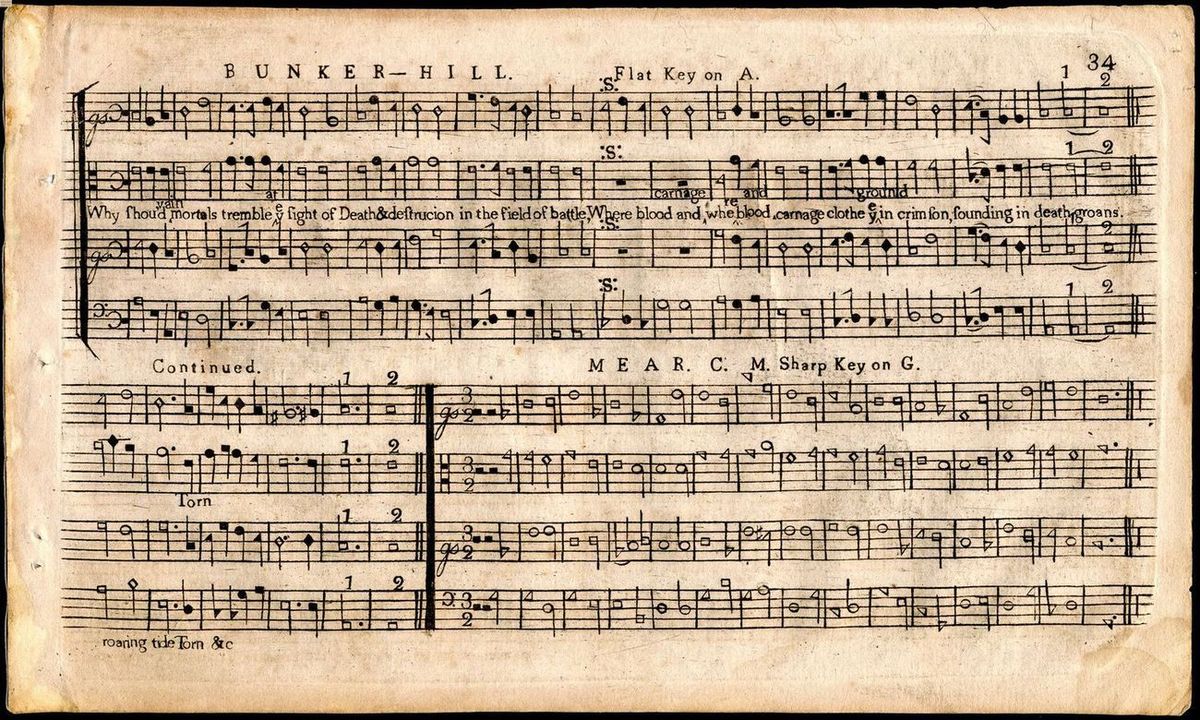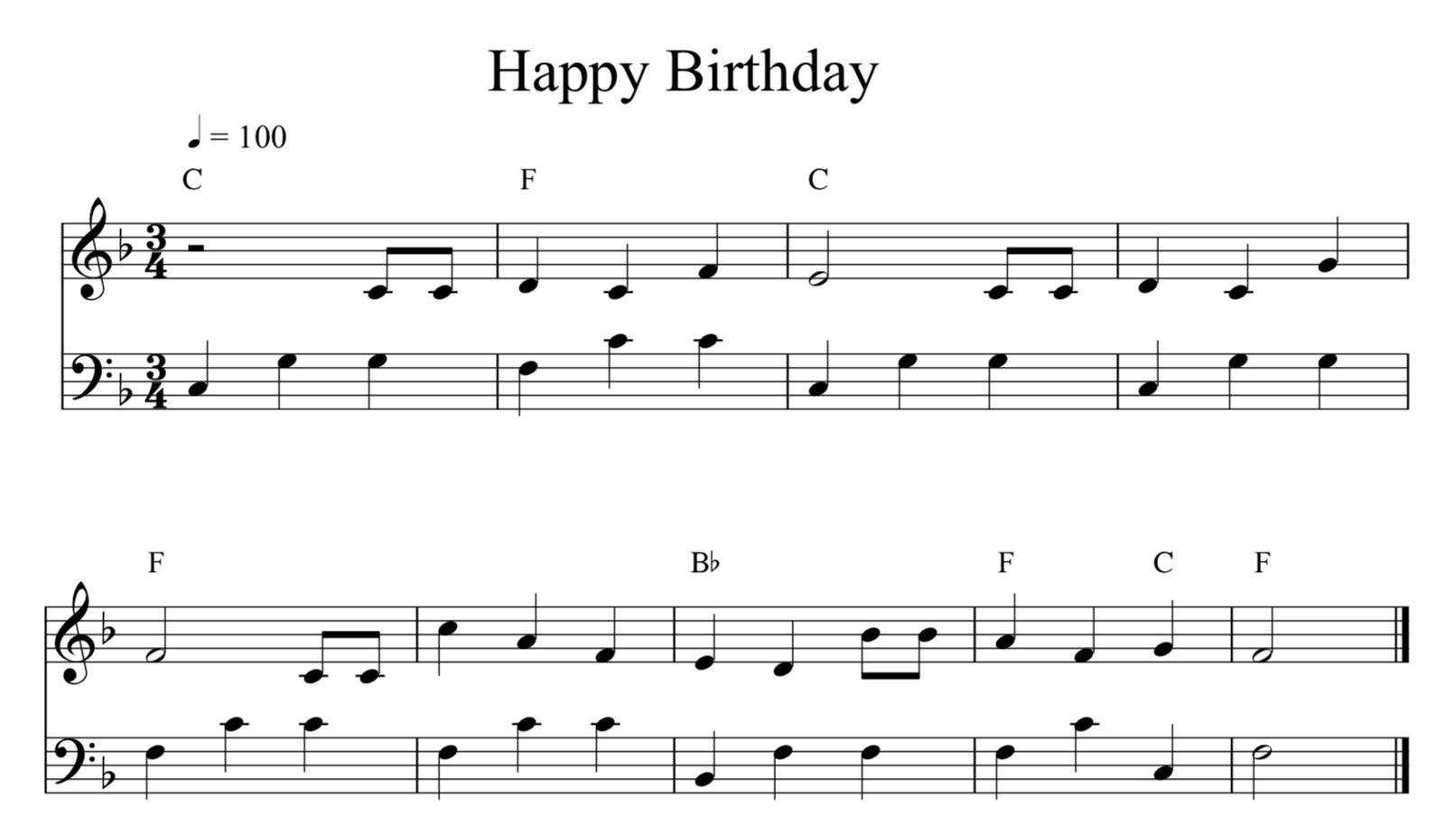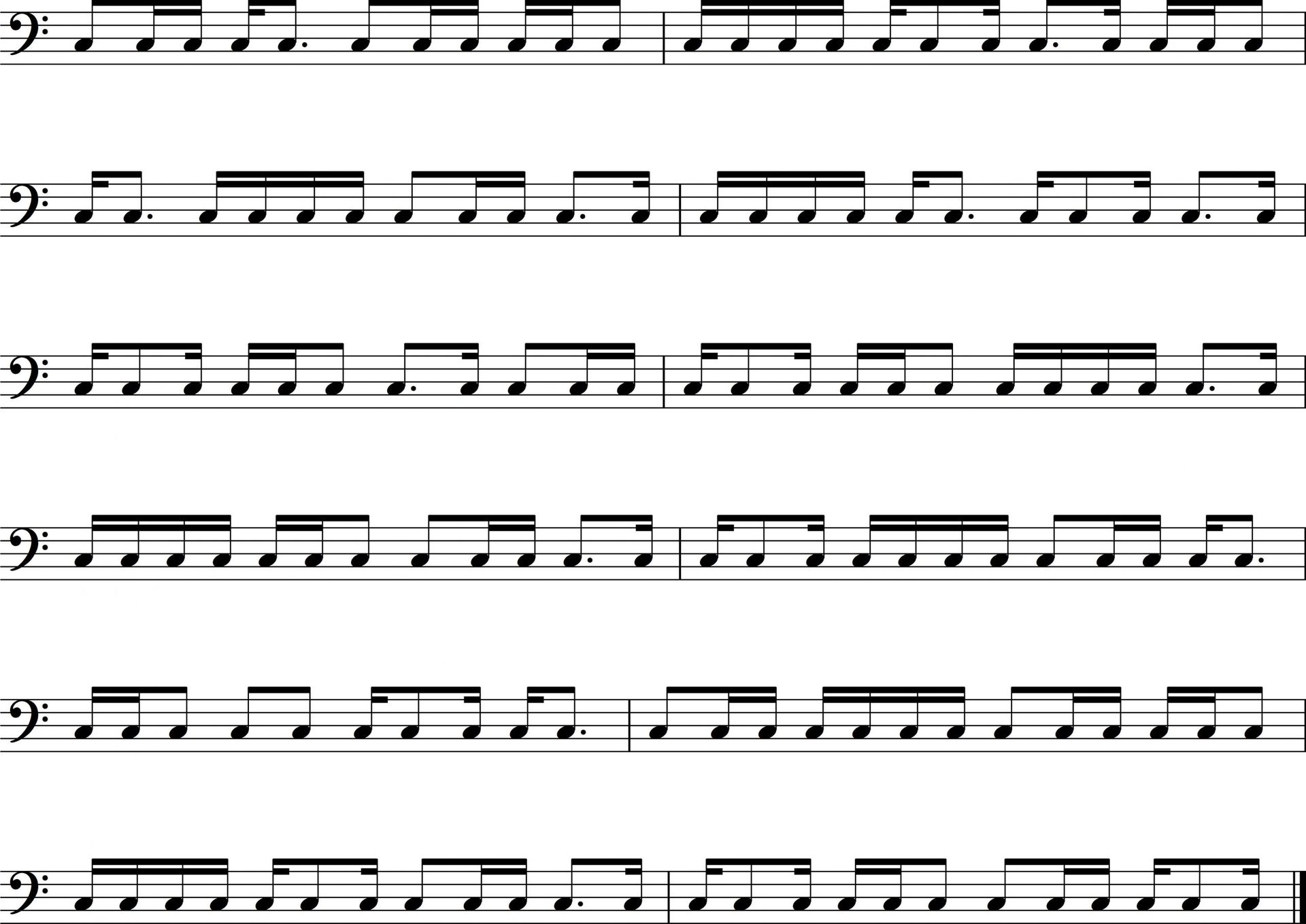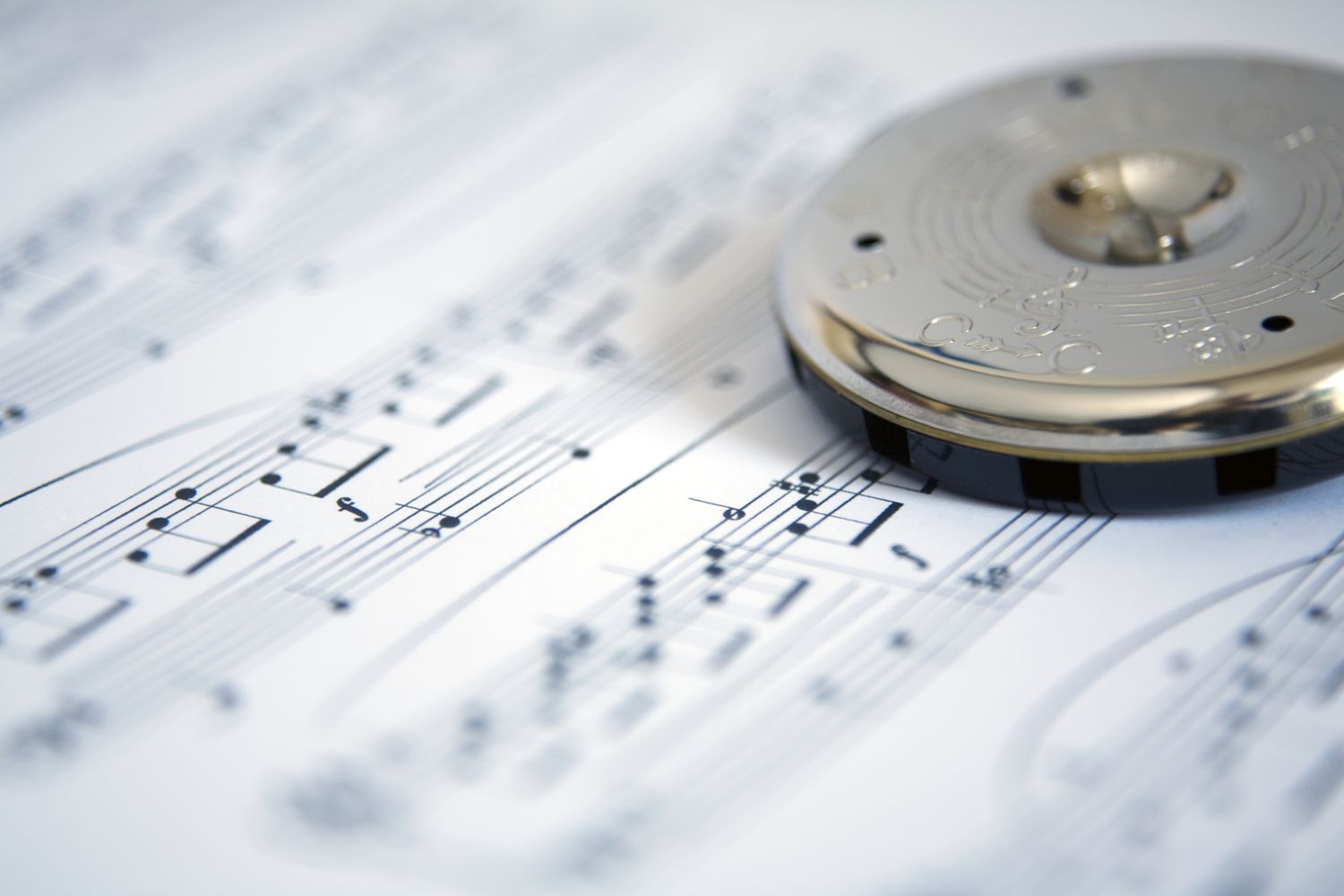Home>Events & Info>Note>What Is A Flat Music Note


Note
What Is A Flat Music Note
Published: December 5, 2023
Discover what a flat music note is and how it alters the pitch of a musical composition. Explore its significance in music theory and notation.
(Many of the links in this article redirect to a specific reviewed product. Your purchase of these products through affiliate links helps to generate commission for AudioLover.com, at no extra cost. Learn more)
Table of Contents
Introduction
In the world of music, notes are the building blocks that create melodies and harmonies. When we think of notes, we often imagine symbols on a sheet of music or keys on a piano. However, notes also have various characteristics that affect their pitch and sound. One such characteristic is the use of accidentals, which are symbols that modify the pitch of a note.
In this article, we will explore one specific accidental known as the “flat” note. We will delve into its definition, how to identify it, its function in music, and its various uses and notations. Additionally, we will discuss techniques for playing flat notes and transposing music that involves them.
Understanding the flat note is essential for musicians of all levels, as it contributes to the overall understanding and interpretation of musical compositions. Whether you are a beginner or an experienced musician, this article will provide you with valuable insights into the world of flat notes and their role in music.
Definition of a Flat Music Note
A flat note, represented by the symbol “♭” (pronounced “flat”), is an accidental that lowers the pitch of a note by a half step. This means that when a note is played as a flat, it sounds slightly lower than its natural pitch. In musical notation, the flat symbol is placed before the note, indicating that it should be played one semitone lower.
For example, if we take the note C and lower it by a half step using a flat symbol, it becomes C♭. Similarly, if we take the note D and lower it by a half step, it becomes D♭. The flat accidental can be applied to any of the 12 notes in the musical alphabet, creating a total of 12 distinct flat notes.
The use of flat notes helps to introduce chromaticism into music, which involves incorporating notes outside of the given key signature. By lowering the pitch of a note with a flat symbol, composers and musicians can create unique harmonic and melodic effects.
It is important to note that the term “flat” not only refers to the symbol itself but also to the altered pitch of the note. When we say a note is “flattened,” we are referring to its pitch being lowered by a half step with the addition of a flat symbol.
How to Identify a Flat Note
Identifying a flat note is relatively straightforward once you understand the concept of lowering the pitch of a note by a half step. Here are a few key points to help you identify flat notes:
- Look for the flat symbol: The flat symbol “♭” is placed before the note to indicate that it should be played or sung a half step lower than its natural pitch. Pay attention to the presence of this symbol in the sheet music or any musical notation you encounter.
- Check the key signature: In many cases, flat notes are already indicated in the key signature of a piece of music. The key signature is a set of sharps or flats at the beginning of a staff, representing the notes that are consistently altered throughout the composition. Look for the flat symbols in the key signature to identify which notes should be played as flats.
- Consider the context: When reading or performing music, it’s important to consider the musical key and the overall tonality of the piece. If you notice a pattern of lowered notes or a consistent use of flats, you can infer that those notes should be played as flat.
With practice, identifying flat notes becomes more intuitive. As you become more familiar with the music theory and the inherent sound of flat notes, you will be able to recognize them more easily while reading or playing music.
The Function of Flat Notes in Music
Flat notes play a crucial role in music by introducing chromaticism and altering the tonal characteristics of a composition. Here are some key functions of flat notes:
- Modifying the key signature: Flat notes are often used to modify the key signature of a piece. In a specific key signature, certain notes may be consistently lowered by a half step using flat symbols. This alteration allows composers to explore different harmonic possibilities and create unique tonal colors.
- Creating tension and resolution: Flat notes can be used strategically to create harmonic tension and resolution. When a flat note is introduced in a musical phrase, it adds a sense of surprise and unpredictability, momentarily deviating from the established tonal center. This tension can be resolved and returned to stability by transitioning back to the original key.
- Expressing emotional and dramatic effects: Flat notes can evoke specific emotional qualities in music. The lowered pitch can add a melancholic or somber tone to a composition. Composers often utilize flat notes to convey sadness, introspection, or a sense of longing, depending on the desired emotional impact.
- Enriching melodic and harmonic lines: When used in melody or harmony, flat notes can add complexity and richness to the musical lines. They introduce chromaticism, which involves using notes outside of the given key signature, expanding the melodic and harmonic possibilities within a composition.
- Creating contrasting musical elements: Flat notes can be used to contrast with natural or sharp notes, creating musical tension and variety. This interplay between different pitches adds depth and interest to a musical composition, enhancing the overall listening experience.
Ultimately, flat notes enhance the musical landscape by introducing variation, emotion, and an expansive tonal palette. They contribute to the artistry and creativity of composers and provide musicians with opportunities for nuanced and expressive interpretations.
Common Uses of Flat Notes
Flat notes are utilized in a variety of musical contexts and genres. Understanding their common applications can deepen your musical knowledge and appreciation. Here are some common uses of flat notes:
- Key signatures: Flat notes are often used to create key signatures for compositions. For example, the key of F major has one flat (B♭) in its key signature, while the key of B♭ major has two flats (B♭ and E♭). By incorporating flat notes into the key signature, composers establish the tonal foundation and tonal center of the piece.
- Blues music: Flat notes are a fundamental element in blues music. The blues scale, a pentatonic scale with a flat fifth (blue note), is crucial to the distinctive sound and feel of blues. The use of flat notes in blues melodies and improvisation contributes to the genre’s soulful, expressive nature.
- Jazz harmony and improvisation: Jazz music often incorporates complex harmonies and chord progressions. Flat notes are commonly used in jazz harmony, including altered chords and extended chord voicings. Furthermore, improvising jazz musicians frequently utilize flat notes to add chromaticism, tension, and unique colors to their solos.
- Modal music: Modal music, such as music composed in modes other than major and minor scales, often features flat notes. For instance, the Dorian mode includes a flat third and seventh compared to the major scale, giving it a distinct sound. Flat notes play an integral role in establishing the modal character of the music.
- Baroque and classical music ornamentation: In Baroque and classical music, flat notes are frequently used as ornamentation or trills. These embellishments add decorative and expressive elements to the music, enhancing its melodic and textual intricacy.
These are just a few examples of how flat notes are regularly employed in music. The versatility of flat notes allows them to be integrated into a wide range of musical styles and periods, contributing to the diverse sonic landscape of music.
Notation and Representation of Flat Notes
When it comes to the notation and representation of flat notes, there are a few key elements to consider. Let’s explore how flat notes are displayed in musical notation:
Flat Symbol: The symbol used to represent a flat note is a small lowercase “b” or a stylized flat sign (♭). This symbol is placed before the note head to indicate that the note should be played a half step lower than its natural pitch.
Placement of the Flat Symbol: The flat symbol is positioned immediately to the left of the notehead on the staff. It is important to note that the symbol affects only the note adjacent to it. For example, if a measure contains multiple notes on the same line or space, only the note with the flat symbol is affected.
Key Signature: In many cases, flat notes are already indicated in the key signature of a musical composition. Key signatures are a series of sharps or flats placed at the beginning of a staff to represent the altered notes that are consistently used throughout the piece. The flat symbols are positioned on specific lines or spaces, indicating which notes should be played as flat throughout the entire composition.
Accidental Symbols: Despite the presence of a key signature, composers may introduce temporary alterations to the pitch of individual notes using accidental symbols. When a note needs to be played as a flat within a measure, an accidental flat symbol is placed before the note. This accidental flat cancels out the effect of the flat symbol in the key signature for that particular note.
Tie and Slur: When notes with accidentals, including flat notes, are tied or slurred across multiple measures, the accidental only applies to the first occurrence of the note. The subsequent notes in the tied or slurred passage do not require additional accidentals.
Courtesy Accidentals: In some cases, composers may include courtesy accidentals to remind performers of a note’s altered pitch, even if the key signature indicates the note as flat. These accidentals are placed within parentheses and serve as a reminder rather than a mandatory instruction.
Understanding the notation and representation of flat notes allows musicians to accurately interpret and perform musical compositions while maintaining the intended pitch relationships and tonal qualities.
Techniques for Playing Flat Notes
Playing flat notes accurately and effectively requires attention to pitch, finger placement, and intonation. Here are some techniques to help you play flat notes with precision:
- Finger Positioning: Proper finger positioning is essential for playing flat notes on instruments such as the piano, guitar, or wind instruments. Be mindful of the correct placement of fingers to ensure accurate pitch. Practice proper hand and finger positioning to develop muscle memory and increase accuracy.
- Ear Training: Developing a keen ear for pitch is crucial when playing flat notes. Train your ear to recognize the sound of a flat note so that you can adjust your playing accordingly. Practice listening to and playing various musical intervals involving flat notes to refine your pitch recognition skills.
- Tuning: Ensure that your instrument is properly tuned. Tuning regularly helps maintain accurate pitch and intonation when playing flat notes. Use a reliable tuner or reference pitch to make necessary adjustments and keep your instrument in tune.
- Embouchure Control (Wind Instruments): If you play a wind instrument, such as a saxophone or trumpet, proper embouchure control is crucial. Pay attention to your embouchure formation and adjust it to produce the desired pitch when playing flat notes. Experiment with different embouchure settings to find the optimal position for achieving accurate intonation.
- Practice with Scales and Exercises: Incorporate scales, exercises, and technical studies into your practice routine. Focus on scales that include flat notes, as this will help you become comfortable with their fingerings and pitch. Gradually increase the speed and complexity of the exercises to improve your overall control.
- Listen and Learn from Professionals: Actively listen to professional recordings and performances. Pay attention to how experienced musicians negotiate flat notes and integrate them seamlessly into their playing. Observe their fingerings, embouchure (for wind instruments), and overall approach to playing flat notes.
By implementing these techniques consistently and actively engaging with the music you play, you can improve your ability to play flat notes accurately and confidently.
Transposing Music with Flat Notes
Transposing music involves changing the key of a piece of music while maintaining the same intervals and relationships between the notes. When transposing music that includes flat notes, it is important to understand how these notes are affected and adjusted in the process. Here are some considerations for transposing music with flat notes:
- Identify the Key: Determine the original key of the music. This key will serve as the starting point for the transposition process.
- Understand the Interval Relationship: Each flat note in the original key has a specific interval relationship with the other notes. Maintain this interval relationship when transposing to the new key.
- Apply the Key Signature: Flat notes in the original key signature should be adjusted accordingly in the new key signature. If the original key has one flat note, the new key should have one flat as well, but it may be a different note. Make sure to adjust flat notes appropriately based on the new key signature.
- Transpose Flat Notes: Pay attention to the flat notes in the original music and adjust them accordingly based on the new key. If a note is originally a flat, it should remain a flat in the transposed version but with the appropriate adjustment based on the new key signature.
- Account for Accidentals: If the original music contains accidentals, such as temporary flat notes, apply the transposition to those accidentals as well. Ensure that the accidentals maintain their pitch alteration relative to the new key.
- Use a Transposition Chart or Software: Transposing music can be facilitated by using transposition charts or software. These tools provide guidance on how to adjust notes when transposing to different keys. They can be especially helpful for complex pieces or if you are less familiar with transposition.
- Check for Accuracy: After transposing, double-check the new key signature, flat notes, and accidentals to ensure accuracy. Compare the transposed version with the original to confirm that the intervals and relationships between the notes remain consistent.
Transposing music with flat notes requires attention to detail and an understanding of key signatures, intervals, and maintaining the correct pitch relationships. With practice and familiarity, transposing music becomes more natural and allows you to adapt the music to different keys while preserving the original musical structure.
Conclusion
Understanding flat notes and their role in music is essential for musicians of all levels. These versatile symbols alter the pitch of a note, introducing chromaticism, tension, and unique tonal colors into musical compositions. Whether used in key signatures, blues music, jazz improvisation, or classical ornamentation, flat notes play a significant role in shaping the sound and emotional impact of a piece.
Identifying and playing flat notes requires careful attention to notation, finger positioning, and ear training. By accurately interpreting flat symbols and adjusting pitch accordingly, musicians can ensure precise intonation and musicality in their performances.
Transposing music with flat notes involves maintaining the original intervals and relationships between notes while adjusting key signatures and accidentals. This skill allows musicians to adapt music to different keys and explore new tonal possibilities.
Overall, flat notes contribute to the artistry and creativity of music. They add depth, tension, and emotion to compositions, and their understanding and mastery enhance musicians’ ability to express themselves and interpret musical works with precision and nuance.
So, whether you’re playing or composing music, embracing and exploring the world of flat notes will expand your musical horizons and allow you to delve into the richness and complexity of the musical language.











